 Image search results - "ane" Image search results - "ane" |
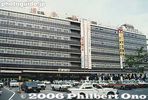
Hakata Station, gateway to Kyushu
|
|

Haneda to Tokushima
|
|

Cherry tree forest near the Nishi-guchi (west) gate.
|
|

The outdoor architectural museum is within Koganei Park in Koganei, Tokyo. This is the Visitors Center.
|
|
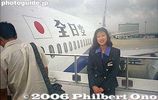
Hi Philbert! Welcome aboard!
|
|
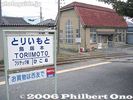
Although the Honjin is long gone, there are a few reminders of its shukuba past. Near Ohmi Railways Toriimoto Station. Map
|
|

Koganei Park sakura
|
|

Going to visitors center
|
|

Huge trees shower you with cherry blossoms.
|
|

Visitors Center entrance courtyard
|
|
|
|
|
|
|
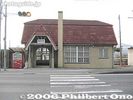
Toriimoto Station building built in 1931 when the station opened and still in use.
|
|

Low branches are common
|
|

Jisho-in Mausoleum
|
|
|

Mansion of Mitsui Hachiroemon, one of the museum's must-see buildingsFounder of the Mitsui zaibatsu.
|
|
|

Inside Mitsui Hachiroemon mansion
|
|
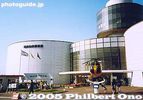
Museum of Aeronautical SciencesThe museum is right at the end of the runway of Narita International Airport.
|
|
|

Tokiwadai Photo Studio, 1937Unfortunately, it was closed for renovations. It has a large frosted glass which brought in daylight for studio lighting.
|
|
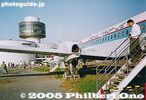
Old YS-11 prop plane.
|
|

About Genova ジェノバの紹介Genova (or Genoa) is a port city on the west coast of Italy. It is the birthplace of Christopher Columbus. For 2004, it was designated as the European City of Culture. From Milan, it takes about 90 min. to reach Genova.
ジェノバは、イタリアの北の西海岸にある港街です。コロンブスの出身地でもあります。ミラノから電車で約1.5時間かかります。
|
|

Kusatsu-juku was the fifty-second station on the Tokaido Road (following Ishibe-juku) and the sixty-eighth station (following Moriyama-juku) on the Nakasendo Road. During the Edo Period, Kusatsu was an important post town at the crossroads of both roads.The roof is shaped like a Honjin lodge, with a gate. 草津駅
|
|

Ohmi Railways Toyosato Station. MAP
|
|

Sugawara house from Tsuruoka city, Yamagata Prefecture. In heavy snow, the front window was used as the door.
|
|

Anegawa River was the site of a major battle with Oda Nobunaga and Tokugawa Ieyasu defeating Azai Nagamasa and the Asakura clan on Aug. 9 1570. The area was left with so many dead that the river ran red.Local place names such as Chibara (Blood Field) stuck. Looking toward Nomura-bashi Bridge where the Anegawa battle monument stands.
|
|
|

Farmer's house
|
|
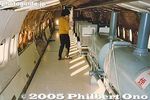
Inside the YS-11
|
|

Ceiling
|
|

Nomura-bashi Bridge crosses Anegawa River. This is where Oda Nobunaga battled the Azai clan.
|
|
|

Farmer's house
|
|

Kyoto Station
|
|
|

Kitamura house brought from Hadano, Kanagawa
|
|
|
|
|

Inside farmer's house
|
|
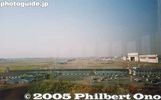
Museum's observation deck.
|
|

Kitamura house
|
|

Battle monument
|
|
|

Inside farmer's house
|
|

Nihon Minkaen is an outdoor museum of traditional farm and merchant houses with thatched roofs. They have 25 homes from around Japan many were donated to the museum for preservation.
|
|

Anegawa River Battle Memorial
|
|
|

Another farmer's house
|
|
|
|

Anegawa River Battle Memorial, rear view with the battle date engraved.
|
|
|

Inside another farmer's house
|
|
|
|

Front view of Anegawa River Battle Memorial where Oda Nobunaga and Tokugawa Ieyasu defeated Azai Nagamasa and the Asakura clan on Aug. 9 1570.
|
|

Path to other areas of the huge park.
|
|

Yamanote-dori Road
|
|

Thatched roof
|
|

Anegawa River Battle Memorial, dedicated to the war dead
|
|

Tall one
|
|

Takahashi Korekiyo mansion
|
|

Water nozzles aimed at the house. No smoking.
|
|

The battle site is next to Nomura village. Nobunaga and the Azai called it the Battle at Nomura.
|
|
|
|
|
|

Next to the battle memorial is another monument.
|
|

Another cherry tree forest near the center of the park.
|
|

Orge's shack
|
|
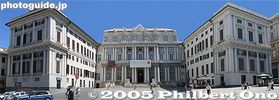
Palazzo Ducale, site of the Japan art exhibition in 2005 (Giappone - L'Arte del mutamento). (展覧会の会場)From April to Aug. 2005, a huge Japanese art exhibition was held at this former palace. It exhibited ukiyoe, posters, textiles, and photographs. The photo exhibition, curated by Rossella Menegazzo and myself (Philbert Ono), showed images of the Hiroshima and Nagasaki atomic bomb aftermath.
2005年4月〜8月にイタリアのジェノバ市で日本の美術展覧会が開催され、浮世絵、着物、アートポスターと写真が展示されました。 写真展は、60周年のため広島・長崎原爆関係の写真が紹介されました。会場は、立派なドゥカーレ宮殿でした。
|
|
|
|

Reaching low
|
|

Shitamachi main street
|
|
|
|

Visitor's center entrance to the outdoor architectural museum.
|
|

Takei Sanshodo stationary shop
|
|

Yamada house
|
|

Battle map showing the position of the opposing armies.
|
|

Cherry blossom promenade
|
|

Takei Sanshodo stationary shop
|
|
|

Sign indicating the site of the Battle at Anegawa River.
|
|
|
|
|

Information Center きよせカタクリまつり
|
|

Air Nippon YS-11 propeller plane. Donated by All Nippon Airways in 1997.
|
|
|

This is where the Azai and Oda Nobunaga armies clashed.
|
|
|

On the left is a soy sauce and miso shop. On the right is a public bath.
|
|

A short walk from the Information Center is Area C (C-chiku), a flat area of woods with katakuri flowers in bloom. C地区
|
|

YS-11 propeller plane. Open to the public on certain days of the year.
|
|

Emukai house brought from Nanto, Toyama. In the gasshi-zukuri style with steep roof. Kawasaki Nihon Minkaen
|
|
|
|

Soy sauce shop
|
|

They even provide a small deck for you to stand on to see the flowers. C地区
|
|

Front of YS-11 propeller plane.
|
|

Nihon Minkaen, Kawasaki, Kanagawa
|
|

Signs indicating the Battle of Anegawa River. This is next to the battle memorial.
|
|

Low-rider cherries
|
|

Soy sauce shop
|
|

Among the trees and grass, you can see the small purple flowers. C地区
|
|

Propeller
|
|

Inside Emukai house
|
|

Mt. Ibuki was witness to the battle.
|
|

Typical Somei-Yoshino cluster of cherry blossoms
|
|

Tavern
|
|

It is getting rarer to see these flowers in Tokyo. Kiyose has an active movement to help preserve and nuture these flowers every year.
|
|
|

Anegawa River, where thousands lay dead after the battle.
|
|

Cherry blossom curtain
|
|

Sento public bath with a temple architectureNamed Kodara-yu.
|
|

Japanese dog's tooth violet (katakuri or Erythronium japonicum)
|
|
|

Anegawa River is a shallow river.
|
|

This was a weekday.
|
|

Entrance to sento public bath. Men on left and women on right.
|
|
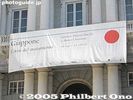
Close-up of sign above the entrance to Palazzo Ducale
|
|

Entrance to Koishikawa Korakuen Garden. It opened as a public garden in 1938. The garden is modeled after Chinese concepts and features.Near Iiidabashi Station and Korakuen Station.
|
|

Japanese dog's tooth violet (katakuri or Erythronium japonicum)
|
|
|

Anegawa River ran red with the blood of fallen warriors in Aug. 1570.
|
|

Beautiful day
|
|

Fee collector booth at entrance.
|
|

Ticket office at Koishikawa Korakuen Garden. Admission ¥300. Free English pamphlet/map available.
|
|

The flower is a member of the lily family, not really a violet.
|
|

In front of Tokorozawa Aviation Museum is a Curtiss-Wright C-46 transport plane.
|
|
|

Anegawa River
|
|
|

Changing room
|
|

Map of garden. Koishikawa Korakuen Garden is designated as one of Japan's Special Historic Place and Special Scenic Spot. Only select places in Japan (like Kyoto's Kinkakuji) have both designations. 国の特別史跡・特別名勝
|
|

A short walk away is Area B which is a wooded slope with the flowers growing wild. B地区
|
|

The C-46 was used by the Japan Air Self-Defense Forces for cargo transport from the 1950s.
|
|
|
|

Anegawa River
|
|

Tree branches sprawled all over the blue sky.
|
|

Bath entrance
|
|

Weeping cherry tree
|
|

Tiny purple flowers on the slope
|
|

Monument for Japan's Birth of Aviation 日本の航空発祥の地・所沢
|
|

Nihon Minkaen, Kawasaki, Kanagawa
|
|

Anegawa River
|
|

Cherry blossom veil
|
|

Bathing area
|
|

Weeping cherry tree, Koishikawa Korakuen Garden, Tokyo. 枝垂桜
|
|
|
|

Toilet
|
|

Anegawa River
|
|
|

It says, "Don't open the faucet. Water might flow."
|
|

This weeping cherry tree is about 60 years old.
|
|
|

The museum park has 25 homes from around Japan many were donated to the museum for preservation. Near Mukogaoka-yuen Station on the Odakyu Line. Closed Mon. Admission 500 yen.
|
|
|
|
|

Bath tub
|
|

Weeping cherry tree, Koishikawa Korakuen Garden, Tokyo.
|
|

Dog's tooth violet on a slope
|
|
|

Water mill
|
|
|
|
|
|

Weeping cherry tree, Koishikawa Korakuen Garden, Tokyo. Called "Shidare-sakura" in Japanese meaning cherry tree with drooping branches.
|
|

Top view of Japanese dog's tooth violet (katakuri or Erythronium japonicum). The petals are flared back (or upward).
|
|

Inside the Tokorozawa Aviation Museum. You are greeted by a replica of Kai-1, Japan's first military plane developed, produced, and flown at Tokorozawa on April 5, 1911. It flew 10 meters high and 800 meters long for 80 sec. 会式一号機
|
|

Inside water mill
|
|

On the other side of this Anegawa River were Oda Nobunaga's forces.
|
|
|
|
|

With Tokyo Dome looming above, Koishikawa Korakuen is another famous Edo-Period Japanese garden originally built by Lord Yorifusa of the Mito Tokugawa Clan in 1629 as part of his Edo estate.The garden was completed under Lord Mitsukuni, the second lord of the Mito clan.
|
|

Japanese dog's tooth violet (katakuri or Erythronium japonicum), Kiyose, Tokyo カタクリ
|
|

Other more modern planes and helicopters are on display in the main exhibition hall. This is a North American T6G.
|
|

Hydrangea
|
|

Nomura-bashi Bridge in the distance.
|
|

Cherry blossom ceiling
|
|

Men's bath
|
|
|
|

Japanese dog's tooth violet on a slope.
|
|

Sikorsky H-19
|
|
|

Cherry blossom roof
|
|

Buckets
|
|
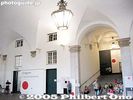
Inside the Palazzo DucaleAs soon as you enter, this is what you see. The lower left is the entrance to the bookstore, and the stairs go up to the textile and ukiyoe exhibition.
|
|
|

Front (or bottom) view of the flower. Japanese dog's tooth violet (katakuri or Erythronium japonicum)
|
|

Japan Air Self-Defense Force helicopter.
|
|
|

Cherry blossom tent
|
|
|
|

Shorozan hill 小廬山
|
|

Japanese dog's tooth violet (katakuri or Erythronium japonicum)
|
|

Inside helicopter
|
|

Anegawa River, looking upstream
|
|
|

Kami-shibai (Storytelling with large paper cards)Popular before the days of television.
|
|
|

Japanese dog's tooth violet (katakuri or Erythronium japonicum)
|
|

Helicopter cockpit with glass bottom.
|
|
|
|

Kami-shibaiSlot to change the story cards.
|
|

Tokyo Dome in the background. The garden is right next to Tokyo Dome.
|
|

Poster for the Katakuri Festival
|
|
|
|
|

Bicycles and cherries
|
|

Old streetcar
|
|
|

Above is a Piper L-21, below is Fuji T-1B.
|
|

Beyond the river on the other side were the Azai clan.
|
|

In front of entrance to visitors center
|
|

Inside streetcar
|
|

Larger weeping cherry tree.
|
|

Area A next to the river. A地区
|
|
|

Fallen tree on riverbed
|
|

Old bus
|
|
|
|

Area A next to the river.
|
|
|
|

Position of the Azai clan
|
|

Fireman's watch tower
|
|
|
|
|

Remains of a Nieuport 81E2.
|
|

Position of the Azai clan
|
|

Police box at Manseibashi in Tokyo
|
|

Cherry blossom shade
|
|

Weeping cherry tree, Koishikawa Korakuen Garden, Tokyo.
|
|

Replica of Nieuport 81E2. This was first imported to Japan in 1918 and used to train Japanese pilots by a French mission.
|
|
|
|
|
|

Weeping cherries
|
|

Model of Japan's first motorized flight.
|
|
|
|

Plum blossom trees (withered)
|
|

Nishikawa Villa
|
|
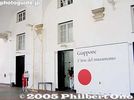
Museum shop entrance and tanabata display.This was taken on July 9, 2005 which is close to Tanabata.
|
|
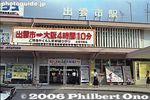
JR Izumo-shi Station in the 1990s.
|
|

Weeping cherry tree and Tsutenkyo Bridge 通天橋
|
|

Turbine engines
|
|
|
| 2949 files on 12 page(s) |
1 |
 |
 |
 |
 |
|